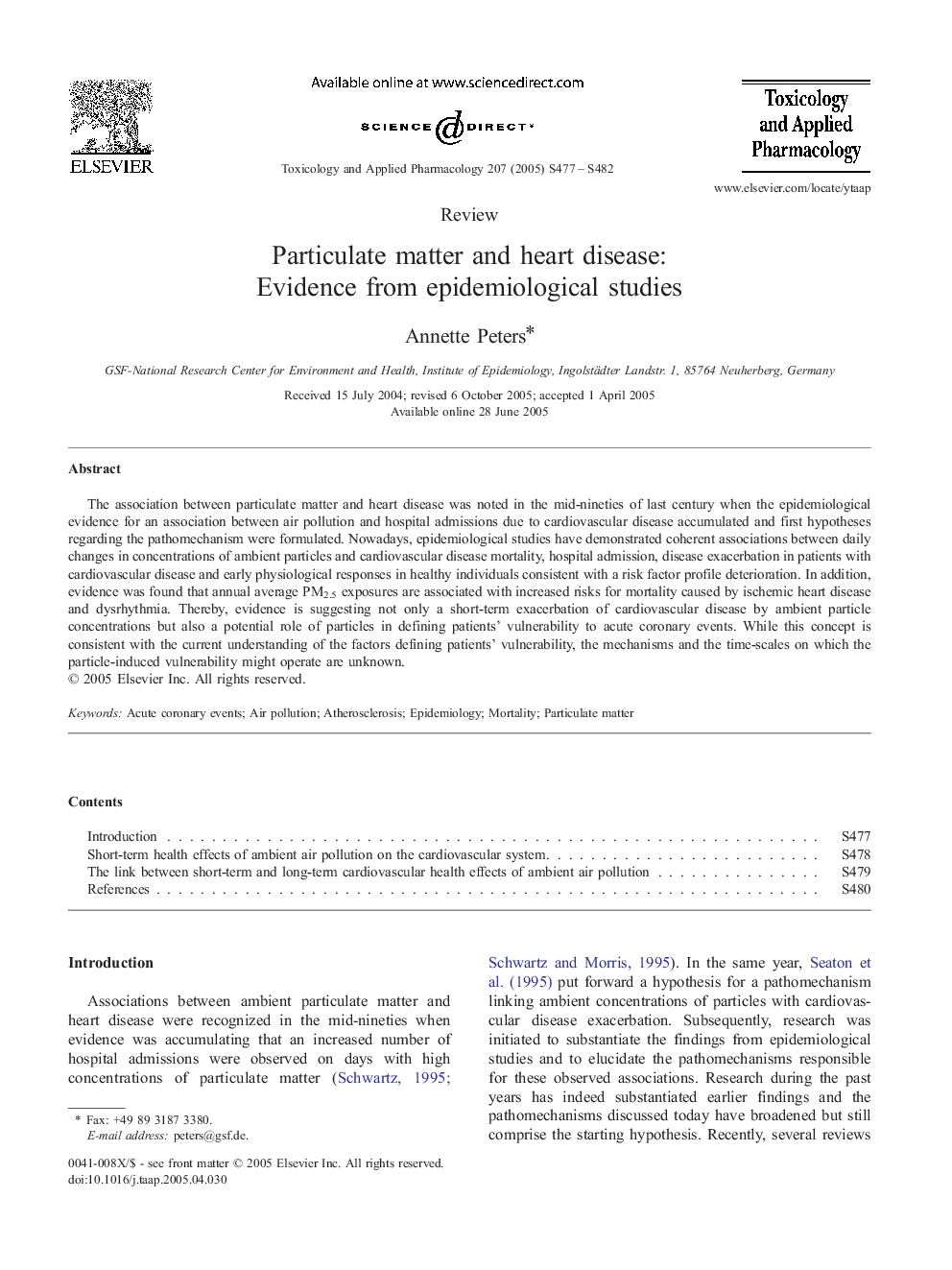| Article ID | Journal | Published Year | Pages | File Type |
|---|---|---|---|---|
| 9017780 | Toxicology and Applied Pharmacology | 2005 | 6 Pages |
Abstract
The association between particulate matter and heart disease was noted in the mid-nineties of last century when the epidemiological evidence for an association between air pollution and hospital admissions due to cardiovascular disease accumulated and first hypotheses regarding the pathomechanism were formulated. Nowadays, epidemiological studies have demonstrated coherent associations between daily changes in concentrations of ambient particles and cardiovascular disease mortality, hospital admission, disease exacerbation in patients with cardiovascular disease and early physiological responses in healthy individuals consistent with a risk factor profile deterioration. In addition, evidence was found that annual average PM2.5 exposures are associated with increased risks for mortality caused by ischemic heart disease and dysrhythmia. Thereby, evidence is suggesting not only a short-term exacerbation of cardiovascular disease by ambient particle concentrations but also a potential role of particles in defining patients' vulnerability to acute coronary events. While this concept is consistent with the current understanding of the factors defining patients' vulnerability, the mechanisms and the time-scales on which the particle-induced vulnerability might operate are unknown.
Related Topics
Life Sciences
Environmental Science
Health, Toxicology and Mutagenesis
Authors
Annette Peters,
